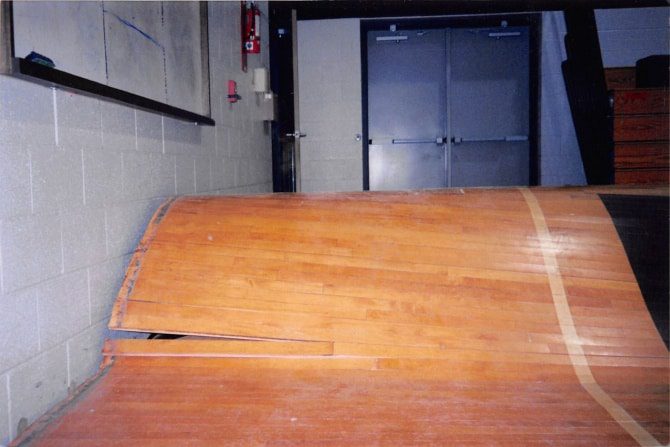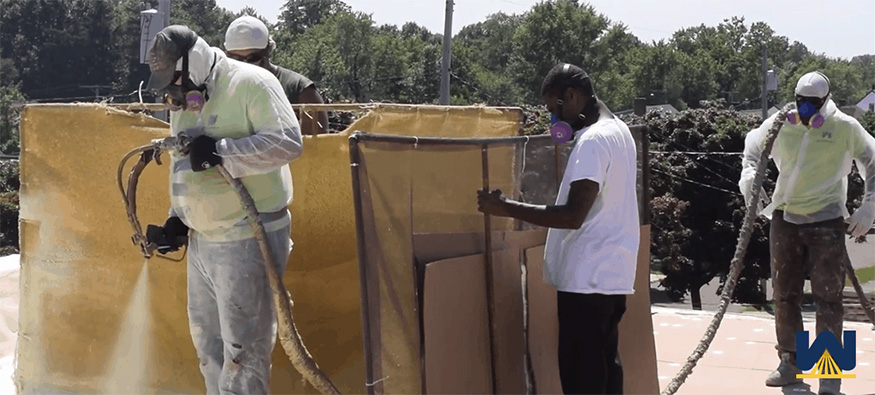Have you ever repaired something, one you’ve done a thousand times, and find new problems happening?
Let me tell you a story about changing the oil on my car.
I’ve done oil changes on cars before I was ever allowed to drive. However, one time a few years ago, a simple oil change turned into a frantic cleanup of 5W-30.
As I was removing the old oil filter, I accidentally left behind a thin, rubber washer. When I put the new filter back on (with its own rubber washer), the extra washer left a gap wide enough for oil to escape.
When I added the new 5 quarts in, started the car, and was waiting a few minutes before testing the oil level, I noticed oil coming out from under the car.
Lo and behold, oil was leaking, I was panicking, dad was hollering.
Even with repairs that you’ve done many times, there are still problems that can happen. This brings me back to roof repairs on schools and the issues we’ve faced.
3 Problems That Can Happen During a School Roof Repair
Problem #1 – Pop-up Storms
When tearing off a roof, you always need to be aware of the weather. However, sometimes storms appear even when they’re not on the radar.
This is especially important when repairing roofs over school gyms. Have you ever seen a gym floor that’s absorbed too much moisture?

Source: https://www.sportsfloorsinc.com/water-wood-gym-floors/
Lebron James would have a difficult time dunking on this roller coaster court.
To avoid rain on your gym floor, there are a few ways a roofing contractor can cover up your roof as fast as possible.
One way is to tarp the exposed area. Every truck is equipped with multiple tarps in case of an emergency storm.
The second way is to sacrifice SPF (Spray Polyurethane Foam). Since most schools are becoming interested in SPF roofs due to the quick lay down, price and energy savings, a roofing contractor can quickly spray foam to cover an exposed area.
In fact, SPF is laid down 50% faster than other types of roofing systems.
Problem #2 – Summer Installation Window
A problem with school roofing repairs is that there’s a limited window to do the work. Most schools and contractors believe it’s beneficial to have roof repairs done when students aren’t in school.
There are three reasons why:
- Chemical overspray can occur; exposing material to surrounding property (cars, buses, etc.)
- Increased safety hazard with roofing vehicles and equipment on site
- HVAC needs to be shut off and covered (No AC)
At Keystone Local School District in LaGrange, Ohio, teacher’s last day is May 24th. Teachers first day to report back is August 21st. That means the school will only be unoccupied for 12.5 weeks.
With unpredictable weather, it’s important to schedule your roofing projects well in advance so we make sure your project is completed in the summer.
Problem #3 – SPF Conditions
Another problem with school roofing projects is the weather conditions associated with SPF.
SPF needs to be applied when there is no ice, frost, surface moisture, or visible dampness on the existing roof. In addition, it’s recommended that it’s at least 50 degrees Fahrenheit
Another issue with SPF is that the wind speeds need to be considered. We use windshields, but if the wind is north of 25mph, there’s a high chance of overspray. Since the SPF roof is installed by a spray application, there’s a risk of the wind carrying overspray onto surrounding cars and other surfaces.
While this does not pose a health concern, it concerns the surrounding property.
Conclusion
There you have it, folks. Now that you know more about the problems that can happen during a roofing repair for your school, we recommend you read more about Spray Polyurethane Foam.
I know a lot of architects and facility managers at schools are firm on using a roofing system that they’re comfortable with, but it never hurts to collect information on other options.
The goal is to teach you as much as possible so you can make the best decision for your school system.


